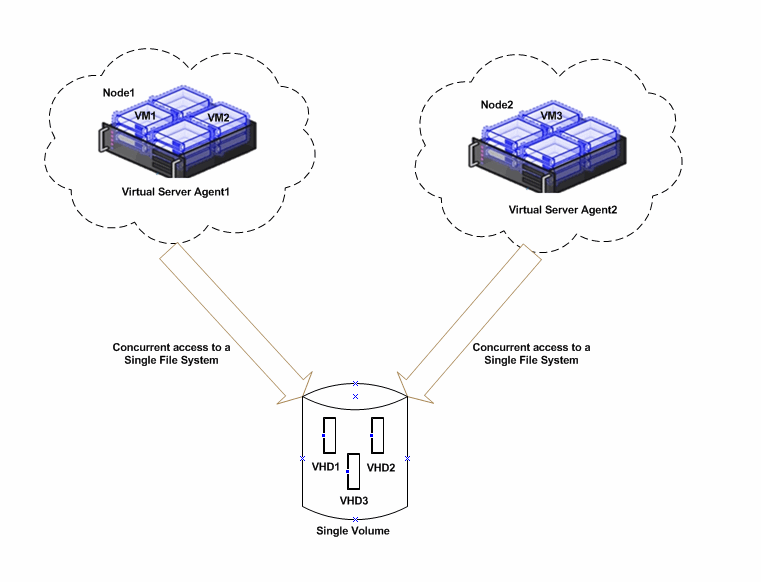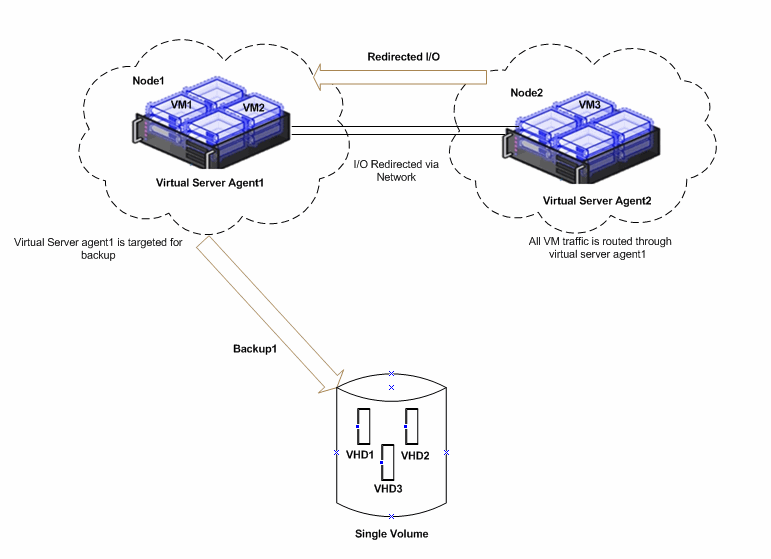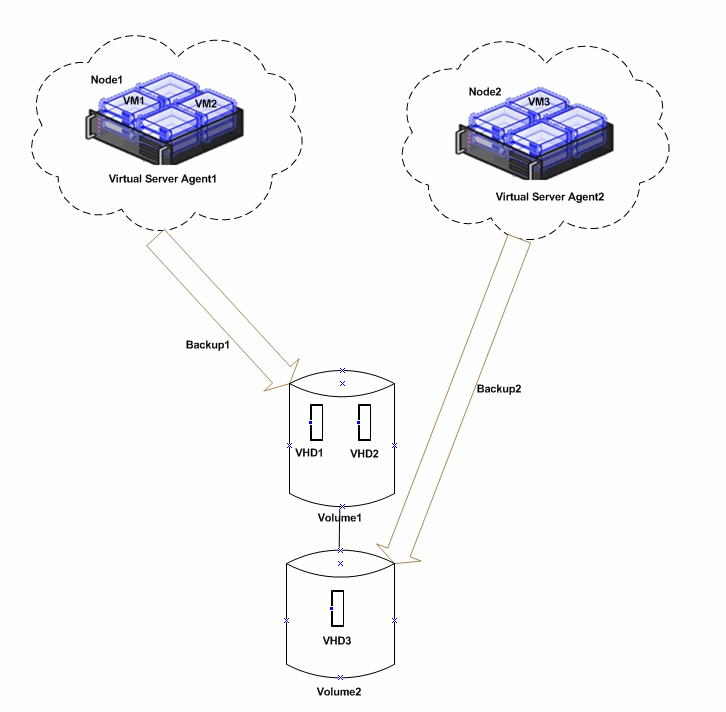Windows 2008 R2 and later versions allow the use of Cluster Shared Volumes (CSV). You can install Microsoft Hyper-V as standalone servers or clustered by using CSVs that include Failover Clustering. When you configure the volumes as CSVs, all the nodes of the failover cluster can access the CSV volumes. Also, each node can open and manage the files on the volumes. Therefore, different nodes can host different virtual machines that all have files on the same volume. Using CSVs, the virtual machines (VM) have complete mobility throughout the cluster as any node can be an owner, and changing owners is easy.
CSVs provide the following advantages:
Easier Storage Management
When virtual machines share volumes, fewer LUNs need to be configured and managed to host the same number of virtual machines.
Independent failover of Virtual Machines
Although multiple virtual machines are sharing the same volume, each virtual machine can fail over, or be moved or migrated, independently of other virtual machines.
No Drive Letter Restrictions
You are not required to assign a drive letter to CSVs. Therefore, so you are not restricted by the number of available drive letters, and you do not have to manage volumes using GUIDs.
Enhanced Availability
The CSV feature is designed to detect and handle many problems that would otherwise cause the storage to be unavailable to virtual machines. This includes detecting and handling storage connection problems (CSV reroutes the storage access through another node).
Efficient Use of Storage
You can make better use of disk space, because you do not need to place each Virtual Hard Disk (VHD) file on a separate disk with extra free space set aside just for that VHD file. Instead, the free space on a CSV can be used by any VHD file on that LUN. This reduces the total amount of space that must be set aside for expansion, and simplifies capacity planning.
For instructions on creating cluster shared volumes, refer to the Microsoft documentation.
Backups of Cluster Shared Volumes to a Single Volume
Cluster Shared Volumes (CSV) allow multiple Hyper-V hosts in a cluster to share the same LUN.
The basic concept of CSV can be seen in the diagram below:
CSV allows multiple virtual machines that are running on multiple cluster nodes to access their Virtual Hard Disk (VHD) files at the same time, even if the VHD files are on a single disk (LUN) in the storage. All clustered virtual machines can fail over independently of one another.
CSV enables Live Migration, which allows a live virtual machine to migrate from one node to another with zero down time.
Figure 1: CSV to a Single Volume

Backups of Clustered Shared Volumes in Redirected I/O Mode
Disks in a Cluster Shared Volume (CSV) are placed into redirected I/O mode during the management of operating system based backups, as illustrated in the diagram below.
When the backup of a virtual machine is started on Node 1, it has ownership of the volume. All of the I/O traffic from the other nodes with virtual machines on this volume flow through Node 1.
This can cause resource contention and requires care when scheduling backups.
Figure 2: CSV in Redirected I/O Mode

Backups of Cluster Shared Volumes to Multiple Volumes
For parallel backups of all nodes in the cluster, you can use multiple cluster shared volumes. Distribute the virtual machines on these volumes as shown in the diagram below. Back up virtual machines residing on one CSV from one node. Virtual machines residing on other CSVs can be backed up from another node of the cluster, at the same time.
To catch virtual machines that migrate from one node to another, ensure that Auto Discovery is enabled.
